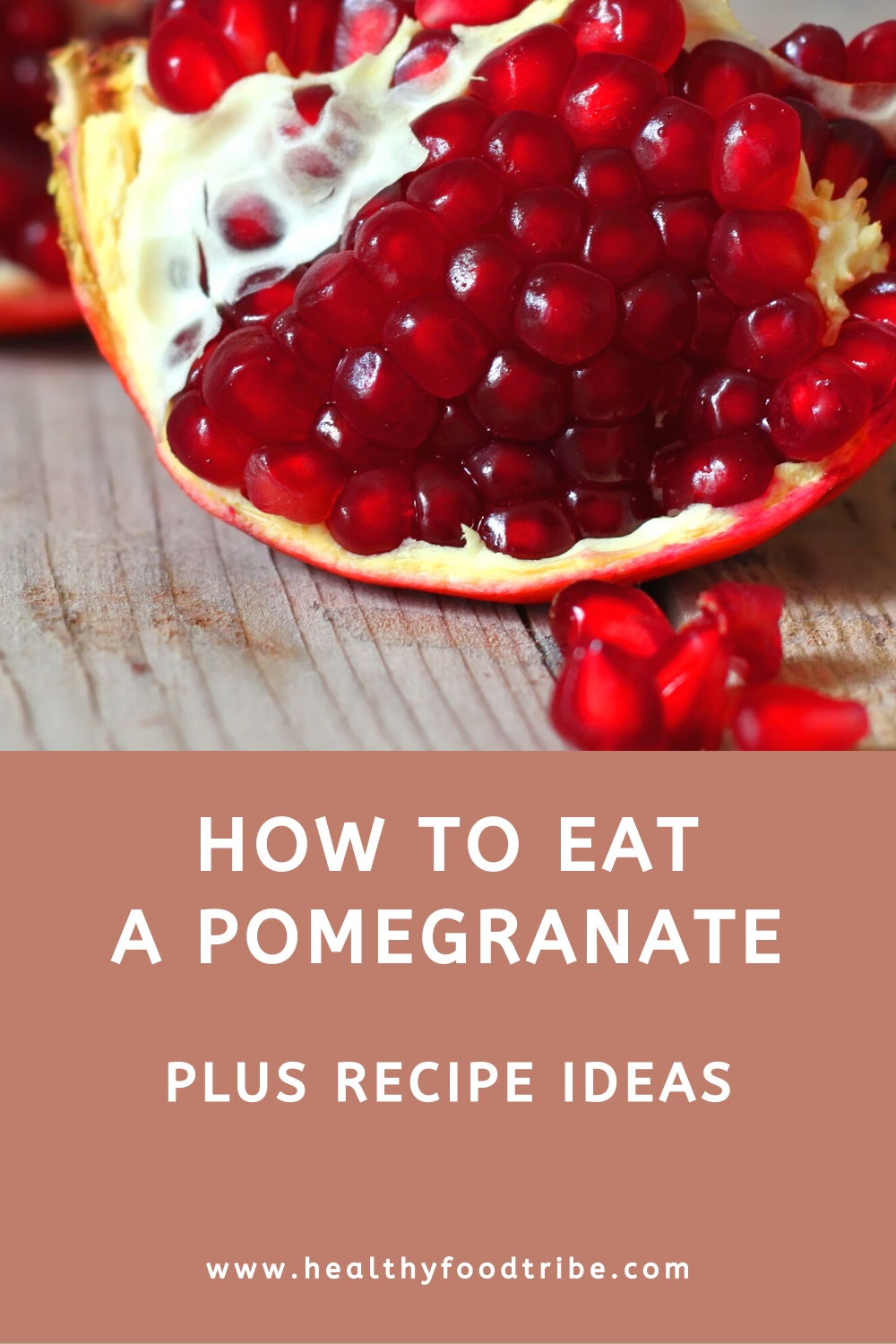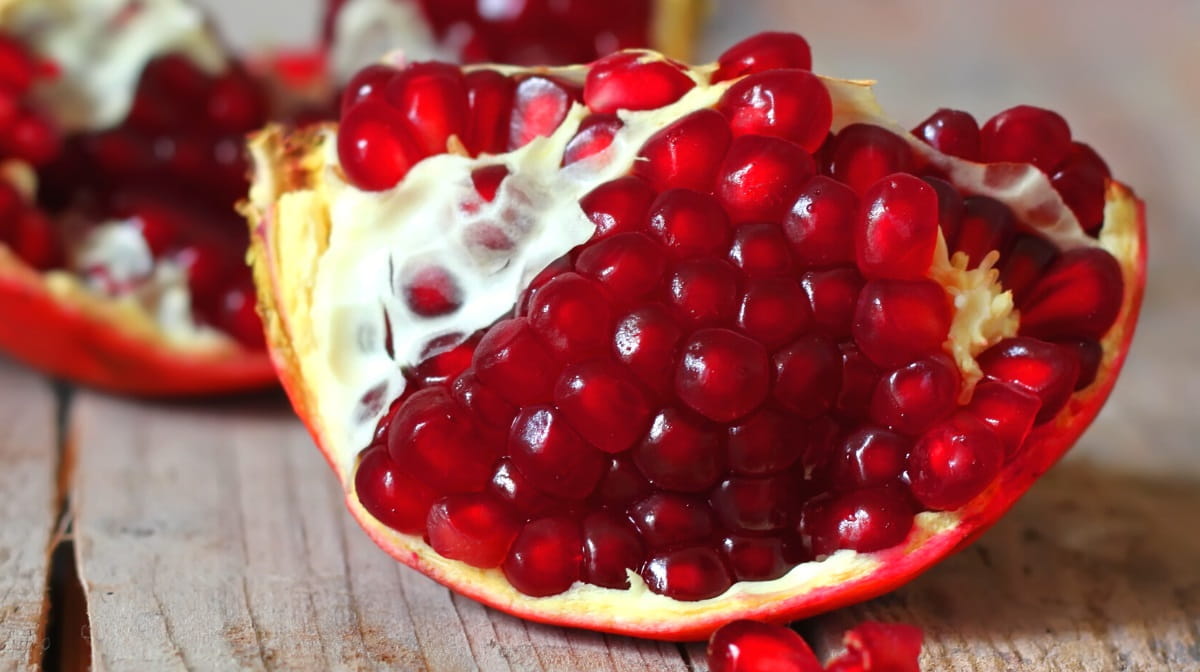Last updated: December 20, 2023
What are pomegranates, and how should we cut and eat them? This guide explains everything you need to know about eating the delicious pomegranate.
Pomegranates are celebrated for their deliciously unique flavor and versatility in recipes. But getting into these leathery fruits and collecting the fleshy seeds from the pithy insides is far from easy. Luckily, there are a few tricks that make cutting and eating fresh pomegranates easier than it looks.
In this article, I will show you how to cut and eat a pomegranate in the easiest and most efficient way. Plus, I’ll share some of our favorite uses for this unique fruit and other tips for selecting and storing pomegranates.
What Is a Pomegranate
Curious to know more about the pomegranate before eating it? Read on!
Origins
Pomegranates are large red fruits that grow from the Punica granatum tree and are native to Iran and northern India.
They spread along with ancient human settlements around the Mediterranean, through the Middle East, and into Southeast Asia.
Today, pomegranates can be found growing in arid subtropical and tropical regions around the world. Some of the largest producers of the fruit are China, Turkey, California, and Spain.
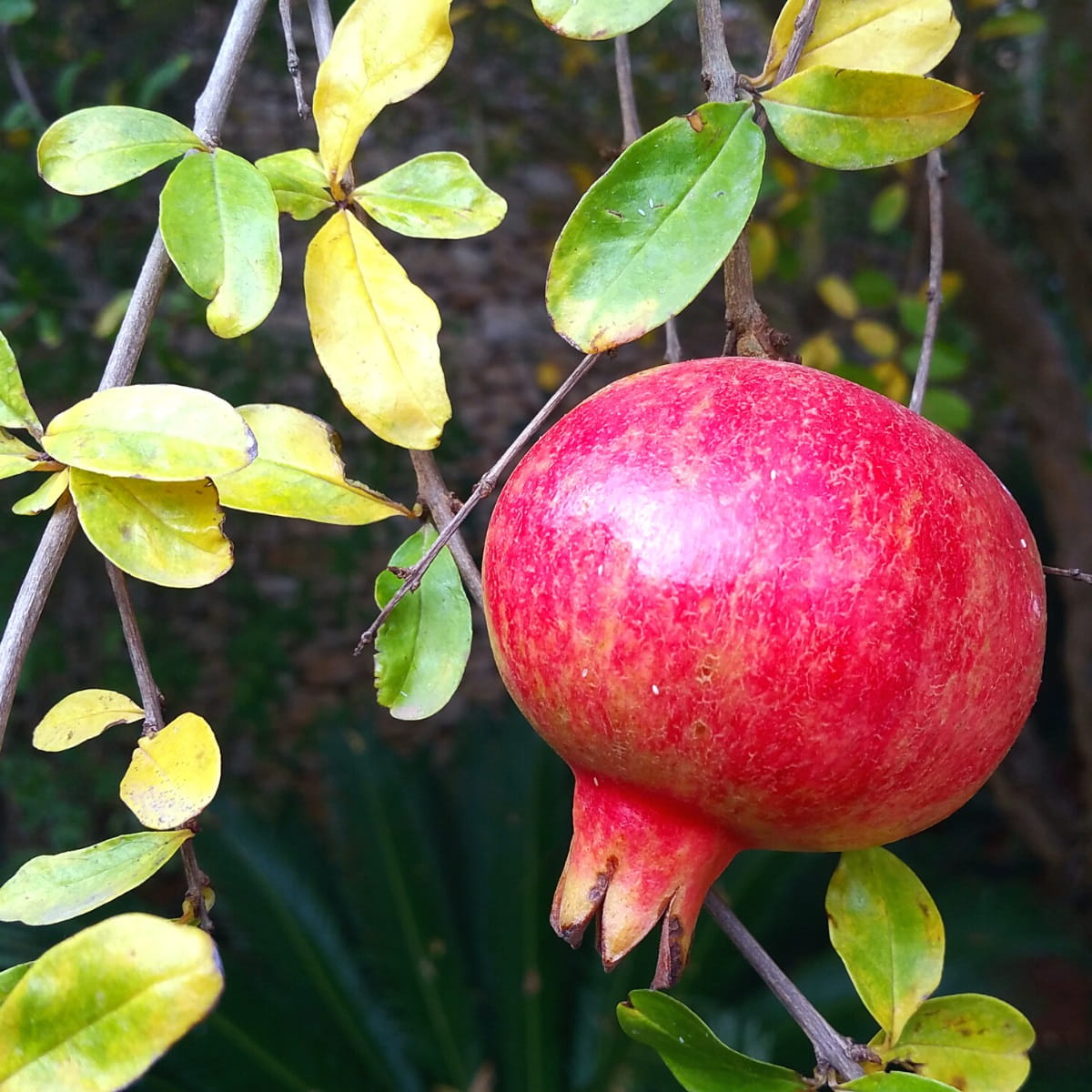
The fruit is unique, with few well-known relatives. Guava is probably the closest pomegranate relative most would recognize, but the differences between the trees and fruits are fairly obvious.
Appearance
One thing that sets pomegranates apart from most other fruits is the hard rind, known as a pericarp. This leathery shell is somewhat malleable but much harder than the thick peels of citrus and bananas.
Inside this shell is a thick white pith called the mesocarp that grows in non-uniform chambers. The juicy seeds are attached to this pith. A mature pomegranate can have anywhere from 200 to 1,400 seeds inside.
Most pomegranates you’ll find at the store are the size of a large orange and have rosy skin and bright purple-red seeds. But with over 500 cultivars of this fruit, this isn’t the only option.
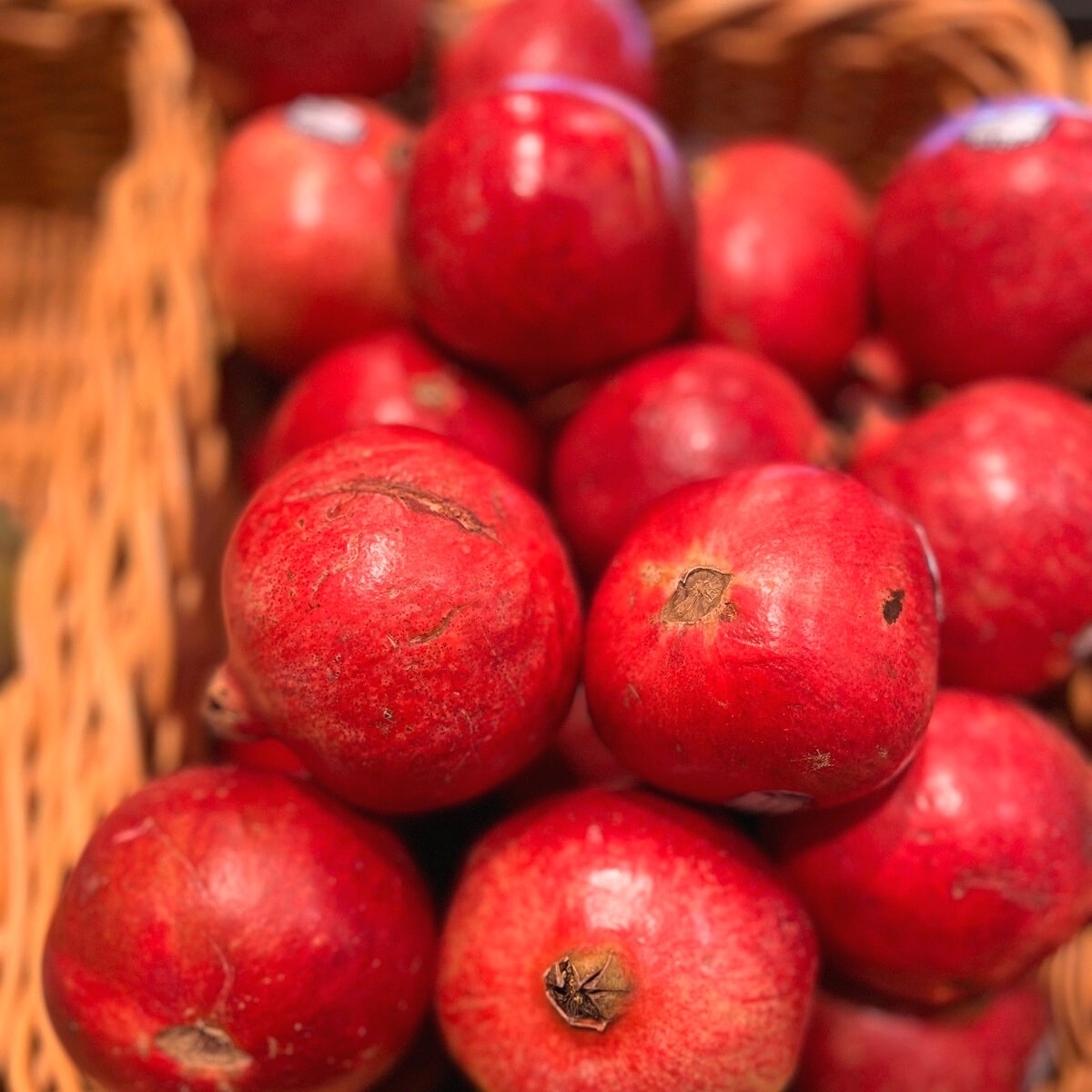
If you go through specialty retailers, you can find pomegranates as small as plums and in colors ranging from orange to nearly black.
All pomegranates start out green, mature to pink, then get darker as they grow. The blossom of the flower remains evident on the crown of the pomegranate even after its fully matured.
A pomegranate that is ready to eat will feel heavy. The rind will shift from smooth and hard to rough with a slight give. Very ripe fruits will begin to crack as the juicy seeds swell inside.
Seeds
Unless you break out the juicer, there is no way to enjoy pomegranate without eating the seeds.

Known as arils or sarcotesta, these strange seeds are wrapped in a fluid-filled membrane that comprises the edible portion of the fruit.
The seeds are quite juicy, but there is a noticeable crunch when eating them that some don’t always enjoy.
Taste
Pomegranate juice is tart, a little bitter, and sweet. It is likened to cranberry juice, but it doesn’t quite have that mouth-puckering and drying effect.
And a ripe pomegranate doesn’t need sugar added to it to taste sweet.
Nutrition
Pomegranate arils are loaded with nutrients and antioxidants. They are high in vitamin C, folate, magnesium, phosphorus, and potassium. The crunchy seeds also provide a good amount of fiber (source).
If you opt for the juice, you get many of the same benefits but without the fiber and with less vitamin C.
How to Eat a Pomegranate
Identifying a ripe pomegranate is fairly easy, but getting to the edible seeds can be tricky.
If you’ve been eating pomegranates by cutting them in half and laboring to scoop out a mess of seeds and pith, we’ve got good news: There’s an easier way.
Steps to cut and eat a pomegranate:
- Before cutting into the pomegranate, wash the outside under running water to remove any potential residues.
- Cut the crown (blossom) end off. You only need to remove about 1/4 inch of flesh to get through the mesocarp and reveal the first layer of seeds.
- Using a sharp paring knife, score the rind vertically from the cut end to the stem end. Cut deep enough to penetrate the rind but not so deep you split the fruit.
- Create three more scoring slices just like this at equal distances to quarter the fruit. Be sure to cut through the rind but not into the pith. If you have a large fruit, you can do more than four vertical slices.
- Place the prepared pomegranate in a bowl of cold water, crown side down. Press the fruit into the water, allowing it to fill the insides.
- Use your hands to rip open the fruit along the scored seams while leaving it submerged in the water.
- Separate the seeds from the pith using your fingers. Let the seeds sink as you dislodge them. Discard the rinds once they’re free of seeds.
- Scoop out any extra pitch floating on the top of the water.
- Using a sieve, drain the water from the seeds.
Once the seeds are separated, you can use them as needed. They can be juiced, added to smoothies, used as a topping for various dishes, or eaten as they are.
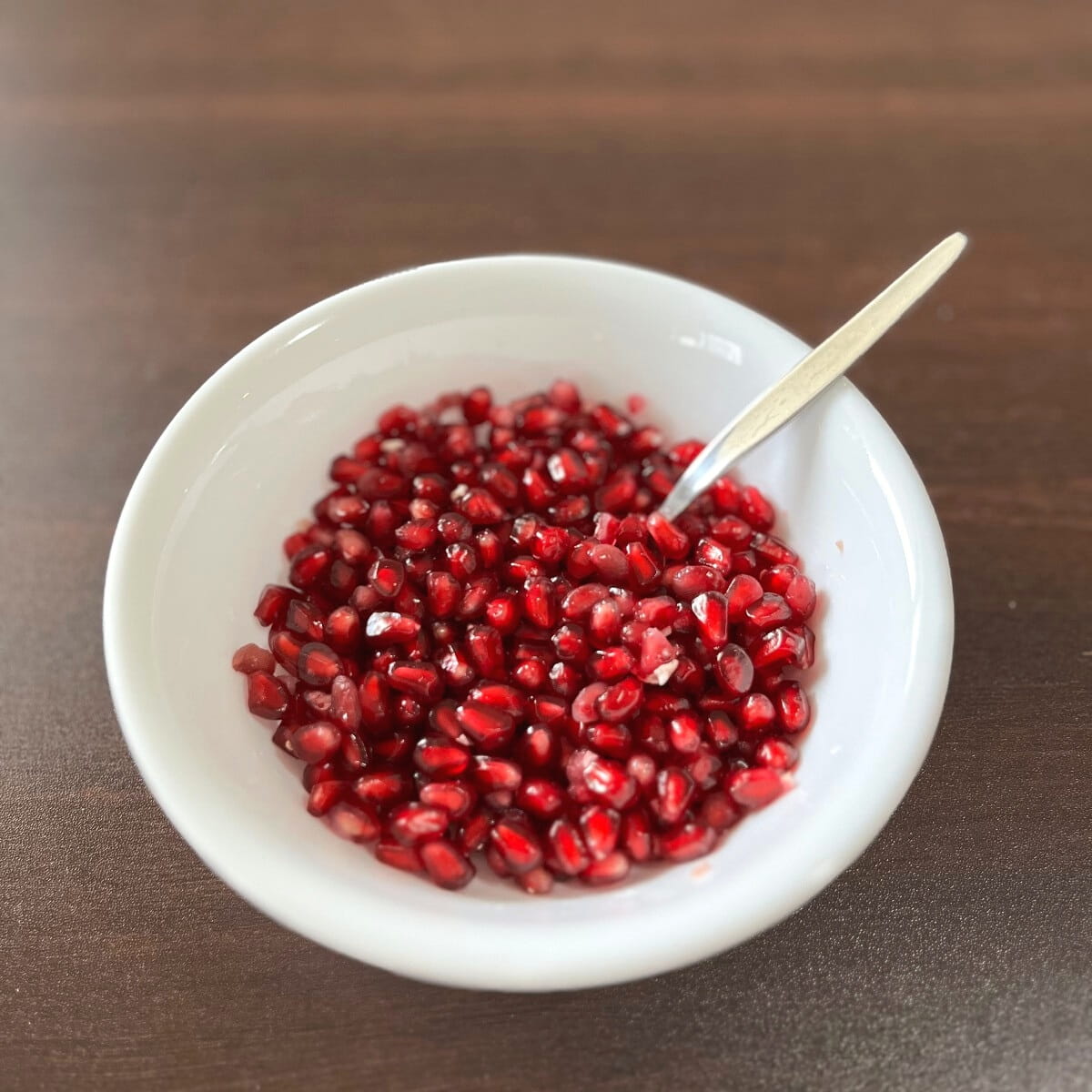
Tips and Recipe Ideas
Now that you know how to access the juicy, delicious seeds of pomegranates, here are a few more tips for handling this strange fruit.
The pomegranate has become one of my favorite red-colored fruits, and I love trying new recipes.
When Is a Pomegranate Ripe
When looking for a ripe pomegranate, you’ll want to pick the fruits up and hold them.
Feel the skin. The rind of ripe pomegranates will be slightly rough and wilted and give somewhat under pressure. The rind might also show cracks near the ends as the seeds swell inside.
Choose the heaviest of the ripe pomegranates. The heavier the fruit, the more swollen seeds are inside.
How to Store Pomegranates
Store fresh uncut pomegranates on the counter for up to two weeks. They can also be stored in the fridge to extend their shelf life up to two months.
Pomegranate seeds should be stored in an airtight container in the refrigerator. Use them within five days.

Fresh seeds, or arils, can also be frozen. The easiest way to do this is to spread them out on a cookie sheet lined with parchment paper and place it in the freezer for about an hour. Once frozen, put the seeds in a freezer-safe Ziploc bag and keep them in the freezer for up to six months.
Recipe Ideas
Pomegranates, or their seeds, can be eaten in different ways.
1. Juice
For those who don’t like eating the crunchy seeds, the best option for enjoying a pomegranate is juicing it. This yields a bright red juice that is tart and sweet.
The juice can also be reduced to create a thick, tart “molasses” that works well on pancakes and desserts.
2. Toppings
Pomegranate seeds are also commonly used as a topping.
They are very popular on salads, especially those with other sweet ingredients. Pomegranate pairs well with feta, orange, grapes, raisins, dried cranberries, walnuts, and sweet vinaigrettes.
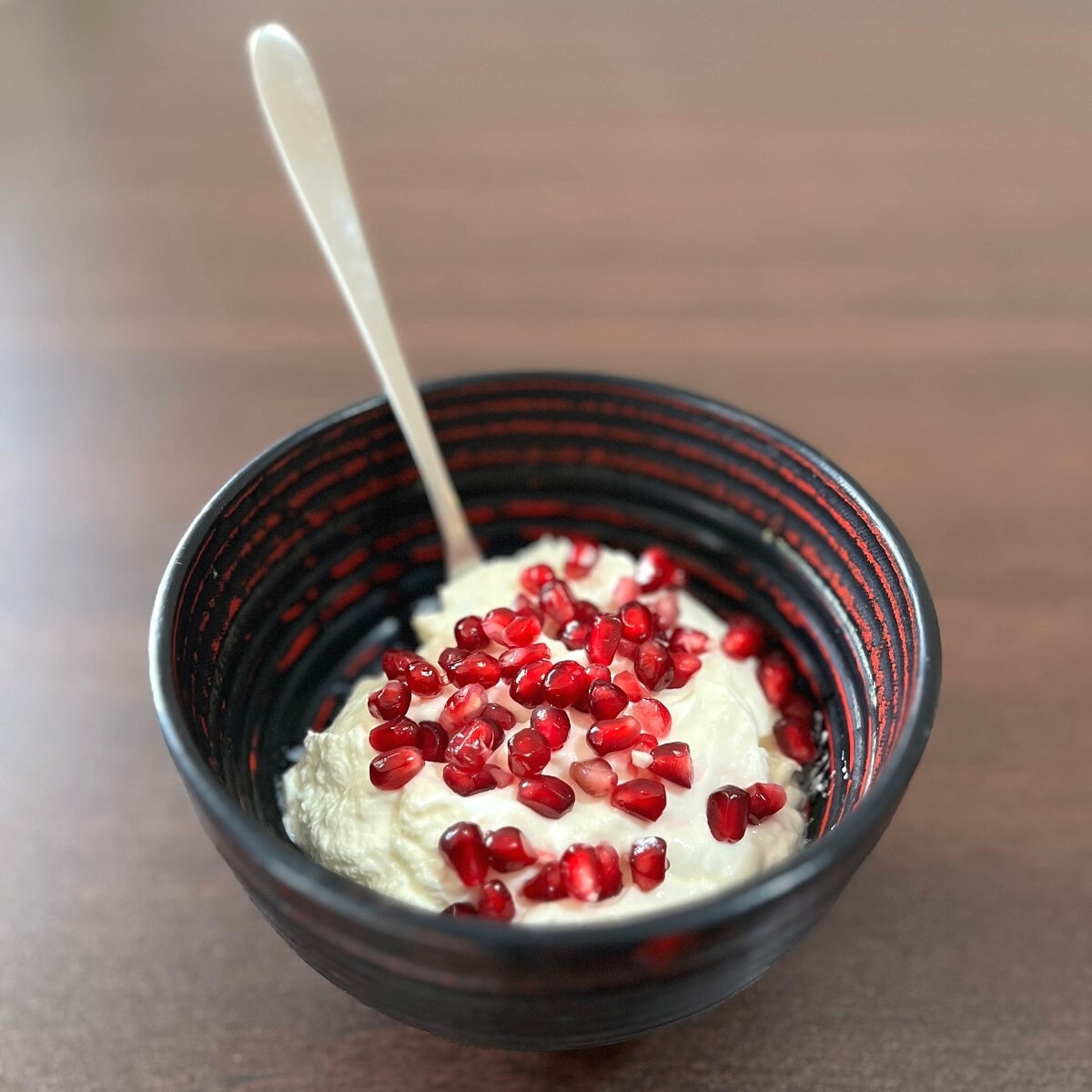
Pomegranate can also be used to top yogurt, oatmeal, waffles, and other breakfast foods. The tartness of the seeds helps elevate dessert dishes as well. Try sprinkling them over brownies, cake, or ice cream.
3. Savory Meals
But this fruit isn’t just for sweets. It also pairs well with savory meals.
Fesenjan is an Iranian chicken stew with sweet and sour flavors that’s served over rice and topped with pomegranate and walnuts.
Muhammara is a popular dip in the Mediterranean similar to hummus that’s made with walnuts, red peppers, pomegranate molasses, and breadcrumbs.
Pomegranate can also be used as a glaze for salmon, chicken, and more.
4. Baked Goods
While often eaten fresh, pomegranate seeds can also be used in baked goods. Pomegranate muffins are a simple but delicious treat. And these ruby seeds can also be used in cobblers, tarts, and pies.
5. Beverages
Pomegranate seeds and juice also appear in many beverages. For adults, pomegranate mixes well with many spirits and liqueurs. And for a nonalcoholic treat, try adding pomegranate to iced tea, soda water, or lemonade.
